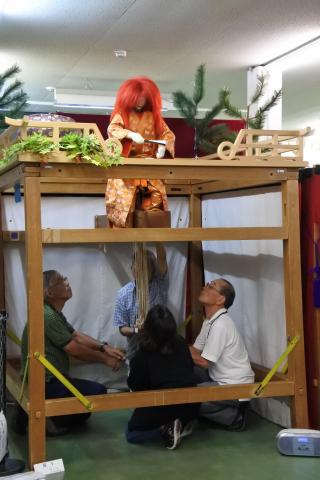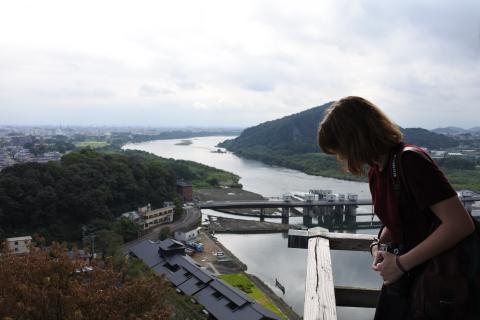The IES Abroad Nagoya program at Nanzan University had its kick-off with a three-day orientation. We stayed at a traditional Japanese inn, called a ryokan, in Inuyama -- a small city north of Nagoya. Inuyama translates to “Dog Mountain.” This orientation exceeded my expectations in several ways. Firstly, I didn’t think I would make such incredible friends so quickly. Within the first day of orientation, I already felt at home though I was in an unfamiliar land. Secondly, we got three-hour Japanese classes each day to review key parts of the language as well as prepare us for the Japanese lifestyle. Having rusty Japanese, those 9 total hours were much needed. Additionally, the activities that IES Abroad had planned for us were rich with history and traditional Japanese culture.

First, we walked around the lush green garden. It was peaceful.

Next, we visited the tea house called JO-AN.

A volunteer tour guide explains how to hold and turn the tea bowl when drinking traditional matcha green tea.

IES Abroad Nagoya students enjoying matcha at the Joan tea house in Inuyama.
-------------------
Then, we entered a museum of Japanese wooden puppets called Karakuri ningyo.

Karakuri puppets are mechanized wooden puppets that date back to the 17th century. It takes multiple people to control the movements of the puppet.

IES Abroad Nagoya students get a chance to try controlling the puppet. It’s a lot harder than it looks -- good communication with fellow puppeteers is necessary to coordinate the movements.

An IES Abroad student attempts a traditional Japanese flute.

A trip to Inuyama Castle calls for silly poses!

An IES Abroad student peering over the top veranda of Inuyama Castle. It was quite a view.

At many Japanese shrines and temples, a fountain is available for purifying oneself by pouring water over the hands and mouth with wooden ladles.

A wall of wishes at the entrance of the Sankou Inari Shrine. A popular Instagram spot among young Japanese women.
**************************************************************************************
There was so much more I wanted to explore in Inuyama, but we had to go to Nanzan University to start the academic semester. If only I could just continue traveling instead of studying!

Deanna Stout
<p>Kamishibai is a Japanese style of storytelling that was popular in the first half of the 20th century. These narrators were street performers of a sort -- they read a variety of stories from a series of illustrated paper boards, entertaining the commonfolk before the emergence of television. I will blog about my experiences in Japan through a modernized version of kamishibai, telling my stories through a series of photographs and their corresponding narrations that will be similar to a novel.</p>






